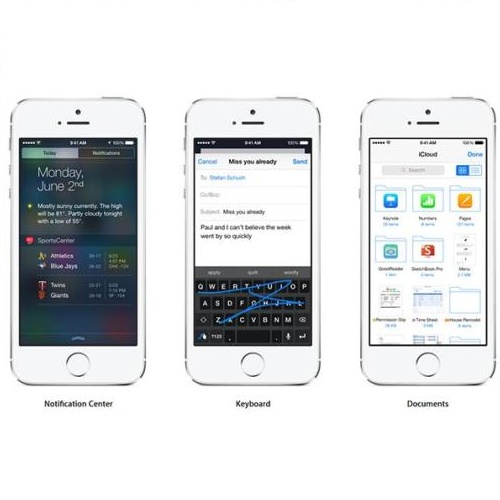The medial axis transform has applications in numerous fields including visualization, computer graphics, and computer vision. Unfortunately, traditional medial axis transformations are usually brittle in the presence of outliers, perturbations and/or noise along the boundary of objects. To overcome this limitation, we introduce a new formulation of the medial axis transform which is naturally robust in the presence of these artifacts. Unlike previous work which has approached the medial axis from a computational geometry angle, we consider it from a numerical optimization perspective. In this work, we follow the definition of the medial axis transform as "the set of maximally inscribed spheres". We show how this definition can be formulated as a least squares relaxation where the transform is obtained by minimizing a continuous optimization problem. The proposed approach is inherently parallelizable by performing independant optimization of each sphere using Gauss-Newton, and its least-squares form allows it to be significantly more robust compared to traditional computational geometry approaches. Extensive experiments on 2D and 3D objects demonstrate that our method provides superior results to the state of the art on both synthetic and real-data.
翻译:介质轴变换在很多领域都有应用, 包括视觉化、 计算机图形和计算机视觉。 不幸的是, 传统的介质轴变换通常在物体边界的外部线、 扰动和/ 或噪声出现时会变得不易。 为了克服这一限制, 我们引入了介质轴变换的新配方, 在这些文物出现时会自然地强大。 与以前从计算几何角度接近介质轴的工作不同, 我们从数字优化的角度来看待它。 在这项工作中, 我们遵循介质轴变换的定义为“ 最神圣的球体集 ” 。 我们展示了如何将这个定义发展成最小的平方, 通过尽量减少连续优化问题实现变换。 提议的方法通过使用 Gaus- Newton 及其最小方形的形式对每个球体进行独立优化, 使得它比传统的计算几何方法更加强大。 在 2D 和 3D 对象上进行的广泛实验显示, 我们的方法为合成和真实数据的艺术状态提供了优异的结果 。


